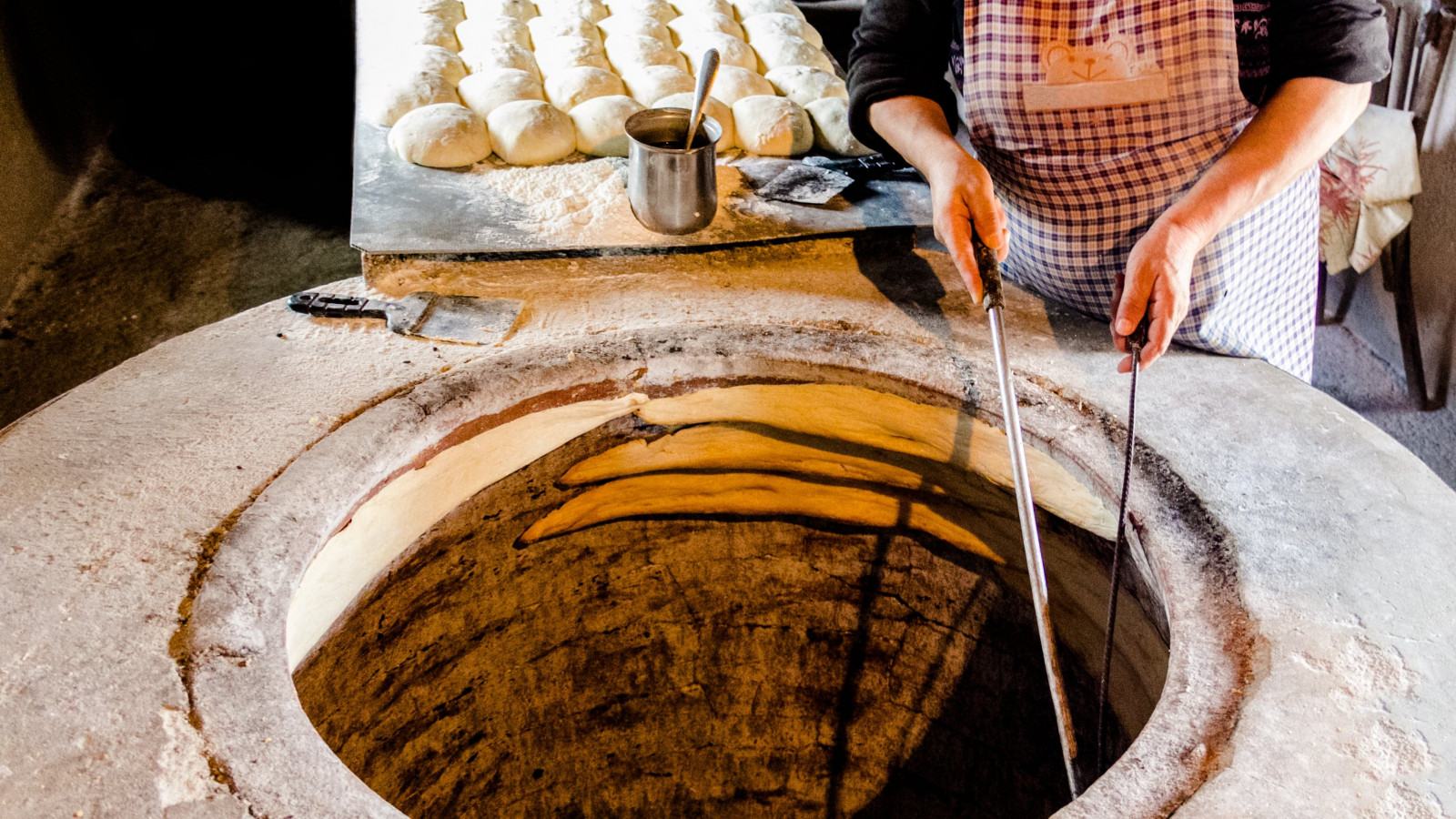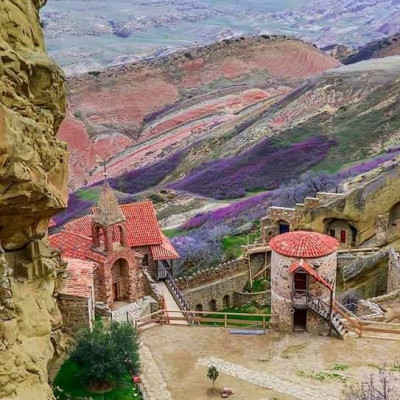
Bread in Georgia is more than food; it is a cultural and spiritual symbol preserved for thousands of years. The traditional Georgian bakery, called “tone,” is a deep circular clay oven where bakers skillfully press dough against the hot walls, creating the famous canoe-shaped “shotis puri.” Baking bread here is a ritual tied to family, hospitality, and faith. In villages, fresh bread was made daily, filling the streets with its aroma and bringing people together. At every supra (feast), bread symbolized life, blessing, and abundance, while also playing a role in religious and family ceremonies—offered to travelers for protection, to newlyweds for prosperity, and baked in special forms for Easter and holidays. The method of baking in the tone dates back thousands of years, showing Georgia’s ancient creativity. Even today, bakeries in Tbilisi and rural towns keep this tradition alive; bakers knead and shape dough with care, then bake it in glowing ovens that produce golden loaves with crisp crusts and soft centers. Tourists often watch in awe as the bread rises in the heat and emerges crackling and fragrant. Beyond taste, each loaf carries history, patience, and devotion, embodying the Georgian value of sharing. Bread is treated with respect, never wasted, and always shared as an act of community. The tone ovens, blackened by generations of fire, remain in daily use, connecting modern life to ancient heritage. For Georgians, bread is not only nourishment but a sacred tradition—a ritual of life, love, and continuity.






 Deutsch
Deutsch
 русский
русский
